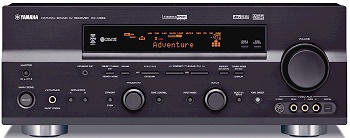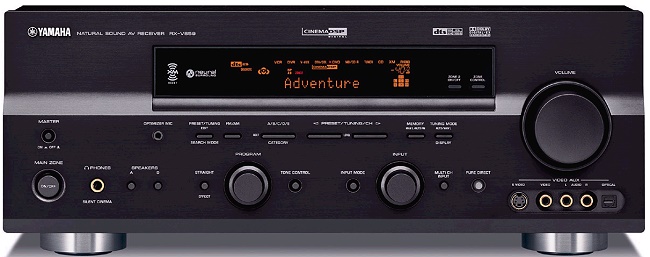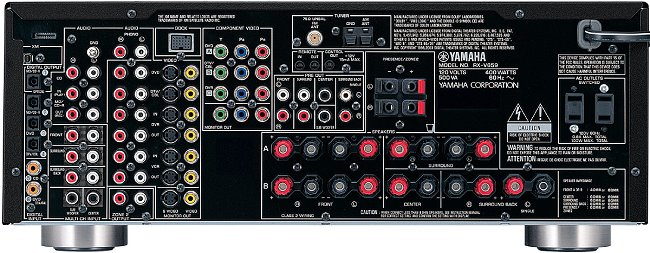|
|
|
Specifications:
● Codecs: Dolby Pro Logic IIx, Dolby Digital
● Features: 2 Zone Operation, XM Satellite
Yamaha |
Introduction
Yamaha has produced some of my favorite budget receivers in recent years,
offering plentiful features and good sound quality for a very reasonable
price.
However, a company is only as good as its most recent product, and Yamaha's latest is the RX-V659 ($549.95). The RX-V659 is mainly an evolutionary receiver, looking very similar to previous models and offering many of the same features. I reviewed their RX-V657 about a year and a half ago.
Yamaha would be remiss if they did not update their components, and the RX-V659 does offer some new features at its price point with an iPod dock option, Neural Surround™ for XMHD (XM Radio HD), and a compressed music enhancer.
Let's see how well this new model fares.
The
Design
The RX-V659 front panel is clean, dark and simple, with its lower half
curving elegantly into its setback upper display area. The receiver uses a
knob-based control scheme with two knobs in the middle of the receiver that
are used primarily to select surround modes and inputs respectively. These
knobs are surrounded by a small set of buttons used to call up their
secondary modes. Above the knobs are a series of buttons to control the
receiver's tuner functions. The Yamaha has a large, but busy amber display,
with simultaneous information on surround mode, Cinema DSP processing,
speaker activity, input, and volume level.
Some of the secondary display areas are hard to read, like the input and the volume level, due to their small text. However, the main display area clearly and legibly shows the key information one needs when executing a task. The front panel is completed with a rubbery feeling volume knob and the "Video Aux" input which features an S-Video, composite, analog stereo, and optical digital input.
Click on the photo above to see a larger version.
The back panel of the Yamaha RX-V659 is well laid out, with three component video inputs and four composite and S-Video inputs. There is also one output each for composite, S-Video, and component, and the Yamaha can up-convert any input to a component output. For audio there are three optical digital inputs, two coaxial digital inputs, and four stereo analog inputs for the video sources. There is also an independent multi-channel audio input (these are often shared with the DVD stereo input on other models), a CD input, an MD input, and a MM phono input. The main speaker outputs are all on binding post connectors, but the "Presence/Zone 2" speakers are on spring clips. The RX-V659 also has a full complement of preamp outputs. The rest of the Yamaha's back panel consists of antenna inputs, the iPod dock input, and IR inputs for control.
Click on the photo above to see a larger version.
Setup
Setup was fast using the automatic setup routine. One simply plugs the
microphone in, enters the setup menu and starts the process. Most aspects of
the automatic setup arrived at the correct values, but some of the speaker
distances were slightly off. This was easily corrected in the manual sound
setup options.
Once the sound setup is complete, you can tune your input
setups by assigning the component video and digital audio inputs to the
various inputs. You can also rename inputs, which is a helpful feature.
However, you cannot assign default surround modes for various inputs, which
would be a very useful feature given the large variety of surround modes the
Yamaha offers. In order to install the YDS-10SL iPod dock (an optional
purchase), one simply needs the iPod to be plugged in and then reset the remote code for V-AUX.
The setup went smoothly and easily and should not present difficulties to
the average user.
|
© Copyright 2007 Secrets of Home Theater & High Fidelity |






